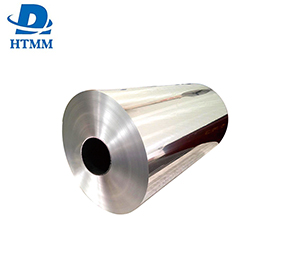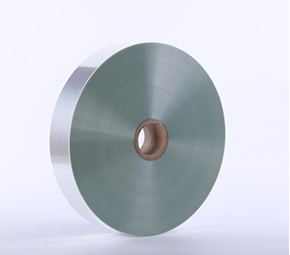.jpg) Aluminum Foil For Air-Conditioner 8011
Aluminum Foil For Air-Conditioner 8011
Air conditioners are gradually developing in the direction of miniaturization, high efficiency, and long life. The heat exchange fins of air conditioners have also developed in the direction of ultra-thin and high-strength. In the 1980s, the thickness of the heat exchange fins was 0.15-0.2 ram, but nowadays the thickness is only between 0.09 and 0.15 mm. In addition, in order to increase the life of the air conditioner, reduce power consumption, improve ventilation quality and improve the cooling effect, coating heat exchange fins with various functions have been developed one after another, such as anti-corrosion heat exchange fins and surface hydrophilic performance heat exchange fins. Heat fins, surface water-repellent heat exchange fins, mildew-proof heat exchange fins and self-lubricating heat exchange fins, etc.
Classification of air conditioner aluminum foil
1. Non-coated aluminum foil
Non-coated aluminum foil refers to aluminum foil that has been rolled and annealed without any form of treatment on the surface. In China 10 years ago, and about 15 years ago, the aluminum foils used for heat exchange fins in air conditioners were all uncoated aluminum foils. About 50% of the heat exchange fins used in developed countries are still uncoated aluminum foil, while in China, this ratio is around 60%.
2. Coated aluminum foil
The so-called coated aluminum foil is to reprocess the surface of non-coated aluminum foil to make it have a certain special function. In countries with fast technological development such as Japan and Germany, coated aluminum foil has been used for more than 15 years.
3. Corrosion-resistant aluminum foil
The surface of the corrosion-resistant aluminum foil product has a certain anti-corrosion protective layer. The air-conditioning heat exchange sheet made of this product can be applied to relatively harsh areas and can significantly increase the service life of the air conditioner. At the same time, due to the improvement of the corrosion resistance of the heat exchange sheet, the generation of surface corrosion powder is greatly reduced, thereby improving the ventilation quality and purifying the air in the air-conditioned room.

4. Hydrophilic aluminum foil
The surface of hydrophilic aluminum foil has strong hydrophilic properties. The hydrophilic property is determined by the angle formed by the water adhering to the surface of the aluminum foil. The smaller the angle α, the better the hydrophilic performance, and vice versa, the worse the hydrophilic performance. Generally speaking, the angle a is less than 35, which is hydrophilic. Hydrophilic aluminum foil is generally used in evaporators of air conditioners. Its main function is to make the moisture in the hot air condense into water droplets on the heat exchange fins, which are easy to disperse when flowing down the sheet. This can prevent the water droplets between the heat exchange fins from affecting the ventilation effect of the heat exchanger. In the past, the hydrophilic aluminum foil on the market not only has better surface hydrophilicity, but also has higher corrosion resistance, which optimizes the performance of the air conditioner.
5. Hydrophobic aluminum foil
Hydrophobic aluminum foil is also called water-repellent aluminum foil, and its surface properties are just the opposite of hydrophilic aluminum foil. That is, when the condensed water condenses on the surface of the aluminum foil, the contact angle with the aluminum foil is relatively large, generally 75° or more. The larger the angle, the better the water resistance, so the effect will be better. The final purpose of using hydrophobic aluminum foil is the same as that of hydrophilic aluminum foil, that is, to prevent condensation water from remaining between the heat exchange fins. The difference is that the hydrophobic aluminum foil achieves the purpose of removing the condensed water between the heat exchange fins by increasing the contact angle between the condensate water and the heat exchange fins, so that the condensed water forms droplets that are easy to slip off.
6. Self-lubricating aluminum foil
In the process of processing and manufacturing air-conditioning heat exchange fins, lubricating oil is generally added to the surface, then punching and flanging, and finally trichloroethylene is used to wash off the lubricating oil. Since trichloroethylene is harmful to the human body, in order to reduce this process, a self-lubricating aluminum foil is produced accordingly. As the name implies, self-lubricating aluminum foil does not need to be lubricated separately during its punching process, and the lubrication during punching is borne by the pre-treated film on the surface of the aluminum foil. Since there is no need to add lubricating oil, the subsequent cleaning and drying process of trichloroethylene is omitted.
7. Anti-mold aluminum foil
The anti-mold aluminum foil is mainly used for the indoor unit of the air decay. Its main function is to prevent the surface of the heat exchange fins from being moulded due to long use or storage time, thereby significantly improving the air decay ventilation quality and preventing abnormal odors Improve the air-conditioned indoor environment.
Aluminium Foil Price For Food Packaging The application is mainly for some high-end food packaging, such as chocolate packaging, tea packaging, etc.





